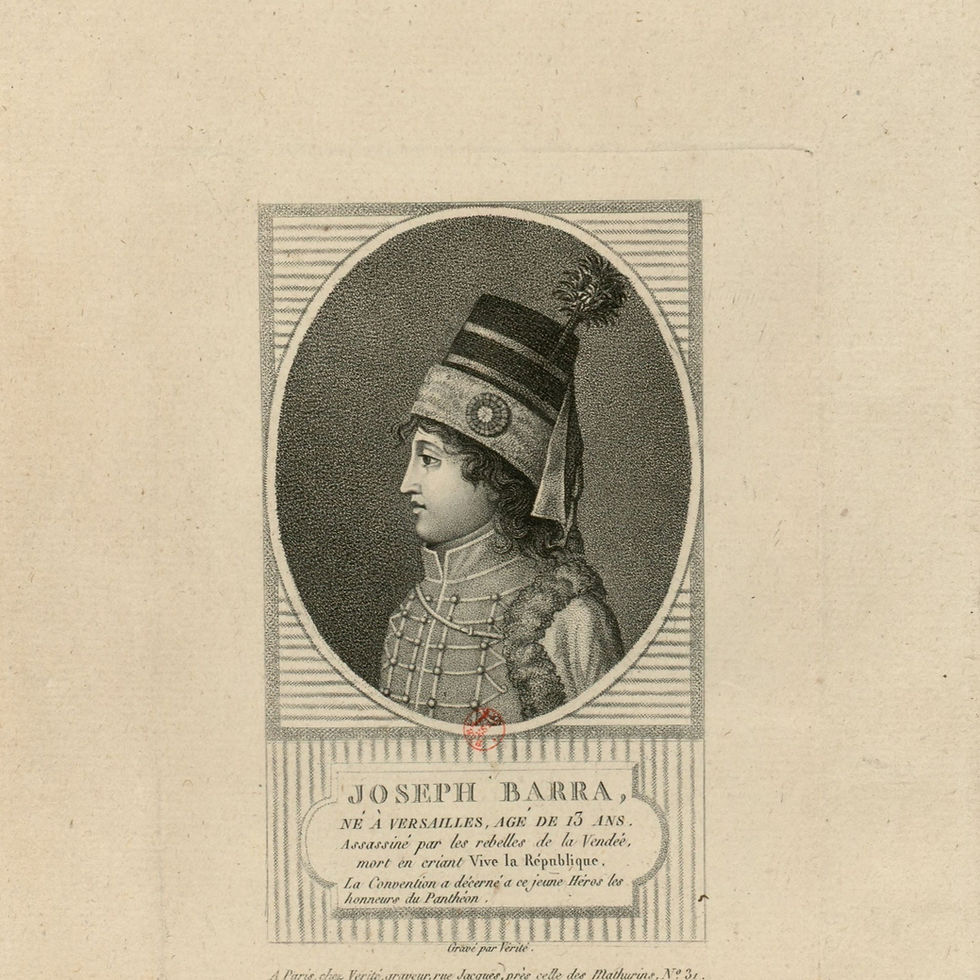The republic is a woman...
- ewengler
- Mar 31, 2020
- 2 min read
Updated: May 9, 2020
[Your title should provide a hint about your thesis.]
How did the French revolutionaries visually represent the nation during the era of the Republic (1793-4) and why? The above research question addresses the significance of my topic by asking why; it is limited in time--from 1793-4; in genre--art depicting the nation; in authorship--French revolutionaries. And those limits influence my choice of sources. By keeping your question limited, you can manage to keep your exhibit to 1500 words (3 typed pages).
Fig 1. Philibert Louis Debucourt, Calendrier republican (1794). Held by the Musée Carnavalet in Paris.
(Each image needs a caption like the above: title. creator, date, where it is located. And each image must contain a tag that links it back to the original.)
Introduction and argument
Here you would introduce your exhibit and lay out your thesis/argument that provides your answer to your question and explains the significance of the object(s) you chose. You want to explain why someone should care about the topic you chose, and/or the artifacts you selected--convince your audience of their significance.
Explanation, integration of sources, etc The way you arrange your exhibit is completely up to you-- you may choose to analyze several different images/objects/primary sources or go deeply into the background of one object, depending on your topic. You can present your visual sources in the body of the paper or at the beginning or end, but regardless, you need to analyze them--they are not wall paper. You should have multiple sections in your post (delineated with bold headlines like I've done but with headline text that relates to your points) that explore different aspects of your topic/object and build upon the argument you made in the introduction to your exhibit. Throughout, you should incorporate your scholarly secondary sources as evidence and cite those sources with parenthetical citations, like so. (Hunt, p. 12)
You can place your visual sources wherever you like in your exhibit but regardless you must analyze and interpret them to support your answer to your research question. Cite them when you talk about them like so. (Fig. 1)

Fig. 2 La liberté, by Nanine Vallain (1794)
Held by Collection of the Musée de la Révolution française, Vizille France
Conclusion
Here you will wrap up what you said in your exhibit, remind your readers of its significance to understanding something important about the French Revolution, and give them something to take away.
Works Cited
At the bottom of your post, include a bibliography that lists the citations for your objects and scholarly sources. Arrange these in alphabetical order, using Chicago style format. Include primary and secondary Here are some models--note the punctuation and the arrangement of the information. The first is for a primary source (first image) and the second is a model for a secondary source--specifically for a chapter/essay in a book with a different editor than the essay's author.
Debucourt, Philibert Louis. Calendrier republican. 1794. Ink engraving, 58 x 43 cm. Musée Carnavalet, Paris. From: Musée Carnavalet, http://parismuseescollections.paris.fr/fr/musee-carnavalet/oeuvres/calendrier-republicain-sur-un-sommet-eleve-la-philosophie#infos-principales
Hunt, Lynn. “Art.” In The French Revolution: Conflicting Interpretations, fourth edition, edited by Frank A. Kafker and James M. Laux, 272-288. Malabar, Florida: R.E. Krieger Publishing, 1989.
Adding?



This is a test.
hello